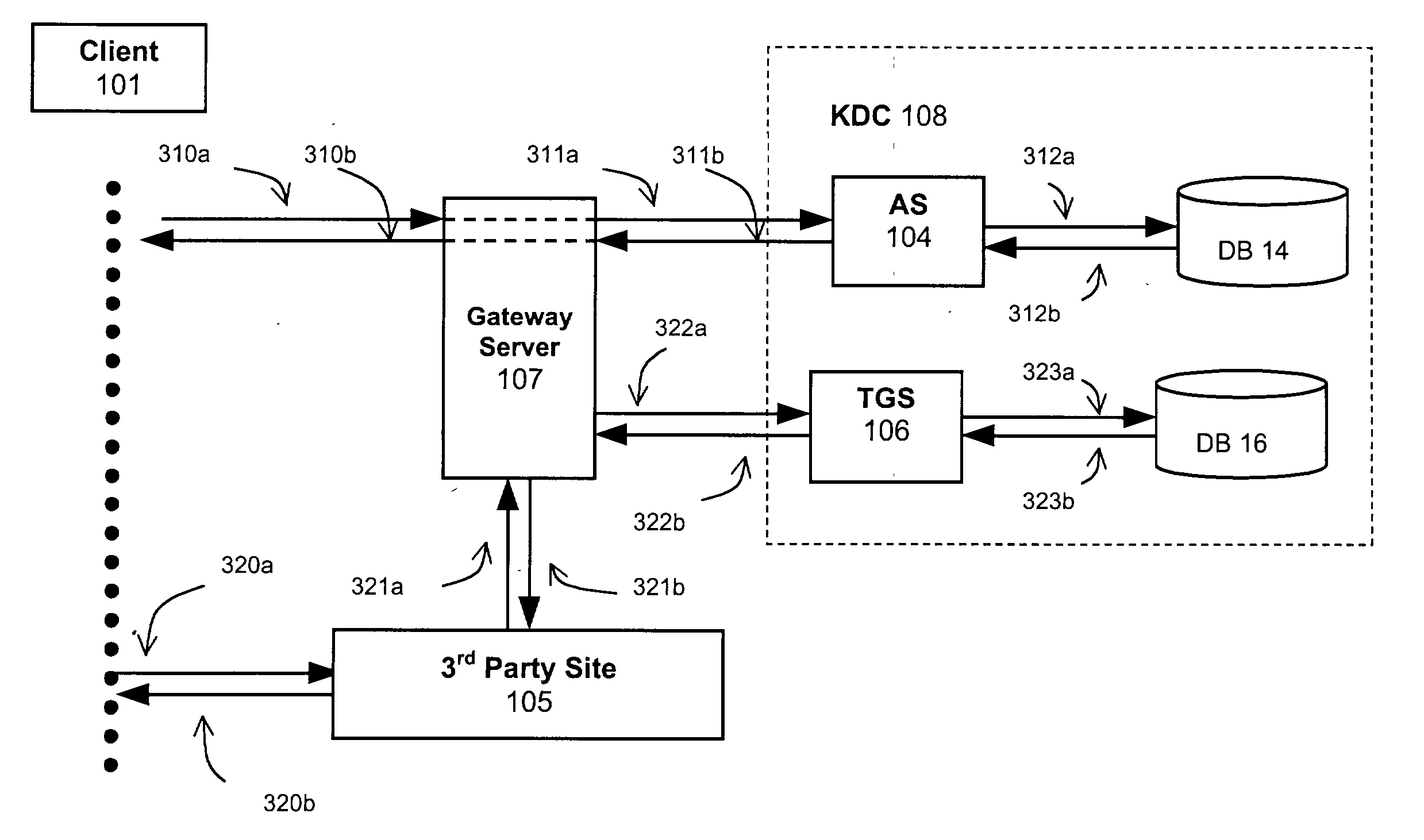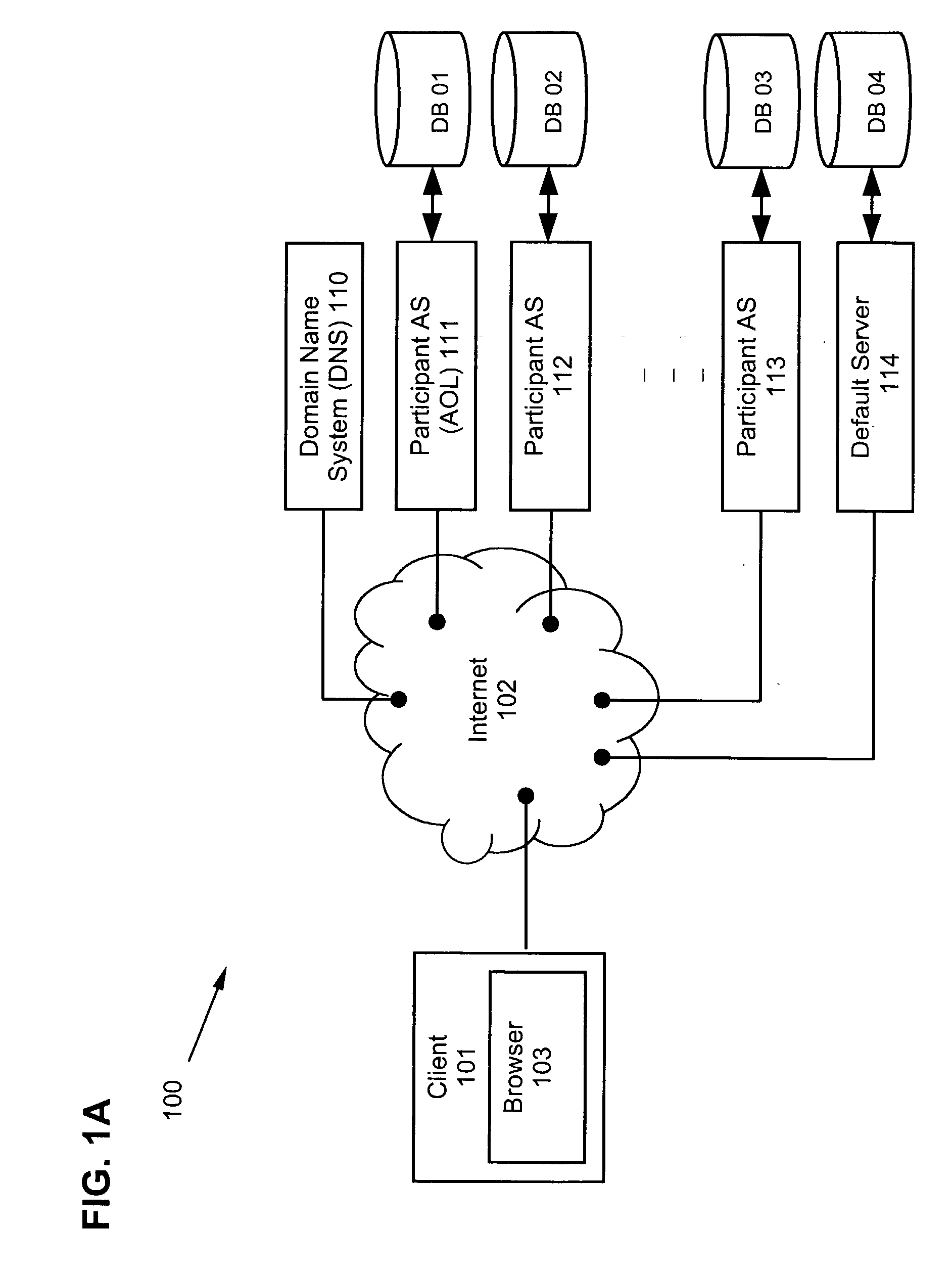Method for authenticating kerberos users from common web browsers
a technology of kerberos and web browsers, applied in the field of internet based authentication technology, can solve the problems of wasting consumers' precious time, burdening sellers or service providers, and affecting and achieves the effect of reducing the risk of counterfeiting, and reducing the quality of kerberos users
- Summary
- Abstract
- Description
- Claims
- Application Information
AI Technical Summary
Benefits of technology
Problems solved by technology
Method used
Image
Examples
Embodiment Construction
[0107] FIG. 3A is a block diagram illustrating a high-level overview of the solution for authenticating Kerberos users from common web-browsers, where a normal web browser 103 is capable of rendering HTML and optionally running JavaScript, a web server acts as a gateway 107 that converts Kerberos on web browsers to normal Kerberos traffic, and a Kerberos Distribution Center (KDC) 108 which maintains Kerberos user accounts.
[0108] FIG. 3B is a schematic block diagram illustrating a Magic Carpet Network (MCN) 300 that facilitates Kerberos authentication service, wherein the KDC 108 includes an authentication server (AS) 104 and a Ticket Granting Server (TGS) 106. There are a number of service provider's servers such as service site 105 coupled to the MCN.
[0109] FIG. 3C is a schematic flow diagram illustrating an authentication process according to one preferred embodiment. To get service from a third party site 105, Client 101 must perform two tasks in two stages:
[0110] Task 1, Client ...
PUM
 Login to View More
Login to View More Abstract
Description
Claims
Application Information
 Login to View More
Login to View More - R&D
- Intellectual Property
- Life Sciences
- Materials
- Tech Scout
- Unparalleled Data Quality
- Higher Quality Content
- 60% Fewer Hallucinations
Browse by: Latest US Patents, China's latest patents, Technical Efficacy Thesaurus, Application Domain, Technology Topic, Popular Technical Reports.
© 2025 PatSnap. All rights reserved.Legal|Privacy policy|Modern Slavery Act Transparency Statement|Sitemap|About US| Contact US: help@patsnap.com



